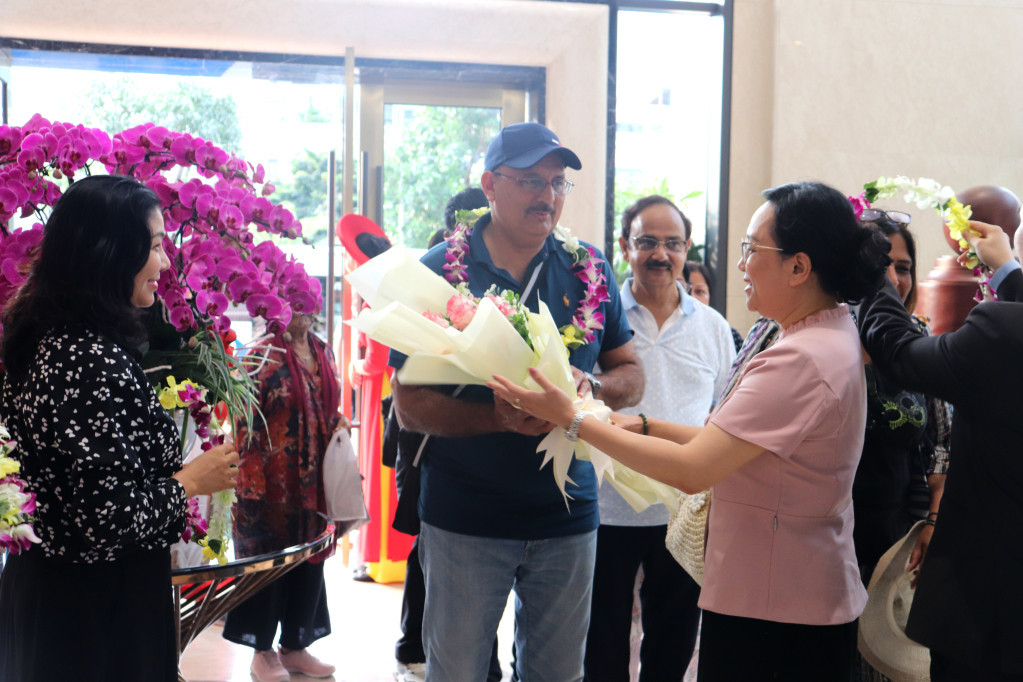
Islamic countries, with 2.1 billion people, are a large target tourism market for Vietnam. About 140 million Muslim travel, but Vietnam attracted less than 1 million in four years.
Nguyen Trung Khanh, head of the Vietnam National Authority of Tourism (VNAT), said Muslims like traveling and spending lavishly and ostentatiously on tourism services. Therefore, all countries pay special attention to the travelers from the market.
The Global Muslim Travel Index report showed a rapid increase in the number of Muslim travelers. It estimated that 108 million Muslims traveled in 2013, while the figure reached 160 million in 2019. After the two years of the Covid-19 pandemic, the market has been recovering.
About 140 million Muslims are predicted to travel internationally in 2023. Experts predict that 230 million Muslims will travel in 2028 and spend $225 billion.
However, the number of Muslim travelers to Vietnam remains modest. From 2015, when the first Muslim travelers came to HCM City, to the days just before the Covid-19 pandemic, or within four years, Vietnam received 1 million travelers from the market.
Thai agencies estimated that 400,000 travelers from the Middle East came to Thailand in 2022 out of the 11.8 million foreign travelers the country received, an increase of 65 percent over 2019. The total spending of the travelers also increased by 71 percent.
Thailand stands fourth on the list of non-Islamic countries favoured by Islamic travelers, following Malaysia, Singapore and the UK.
Khanh noted that Halal tourism still cannot get appropriate attention and investments. In order to attract travelers, Vietnam needs to satisfy specific requirements.
There is only one room for Islamic people to pray and one Halal food court in Vietnam, located at Tan Son Nhat International Airport, which was built in December 2022.
However, this area does not receive all Muslim travelers, but it is reserved only for 70 VIP business-class passengers, a small figure compared with the thousands of Muslim people passing through each day.
There are 14 mosques in HCM City, but only three are located in the central area, favorable for tourists to pray. There are nearly no pray rooms and Halal restaurants in the southeastern region (Binh Duong, Dong Nai, Ba Ria - Vung Tau), the Mekong River Delta and the Central Highlands, including Da Lat City, a famous tourism site.
Tran Nu Ngoc Anh, president of Dong A Hotel Group, said Halal tourism has tended to shift to Southeast Asian countries, including Vietnam. However, Vietnam still hasn't attached much importance to the market, or called for investments to develop services for Muslim travelers.
Nguyen Huyen Anh, deputy director of the Quang Ninh Tourism Department, admitted that though more Indian and Muslims have come to Quang Ninh recently (113,000 Indian travelers in the first 8 months of 2023, or five times higher than the 22,000 travelers in 2022), the number of these travelers remains modest.
Anh cited a number of barriers that make it difficult for the locality to attract Muslim travelers – the lack of communications and advertisement programs, and the difference in culture, religion and taste. Also, Vietnam’s tourism products are not diverse enough and the infrastructure specifically prepared for this group of travelers remains poor.
Vietnam vows to attract wealthy Islamic travelers
Analysts say they can see opportunities to attract Islamic travelers. There are 2.1 billion people in the Muslim world and they spend $10 trillion a year.
Attracting wealthy Islamic travelers is now a new issue of interest of Vietnamese investors and tourism firms. The Vietnam tourism development strategy to 2030 also mentions the need to develop new markets with potential, including the Middle East and India.
Khanh said Vietnam is trying to target markets with people who are willing to pay high prices for services and choose long tours, with the emphasis on the Middle East which comprises 16 countries, including six Gulf countries (Saudi Arabia, UAE, Oman, Qatar, Kuwait and Bahrain).
Ngoc Ha